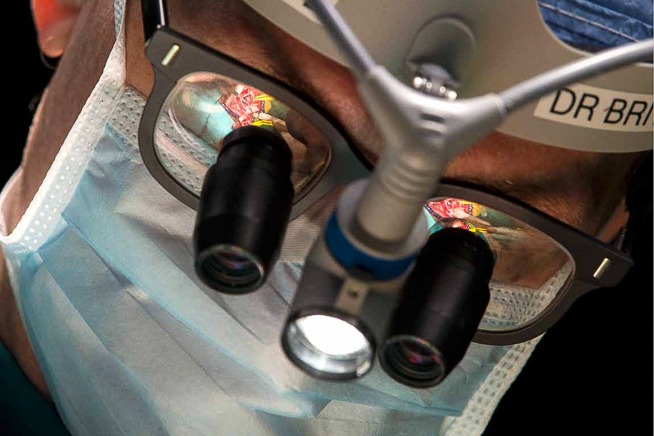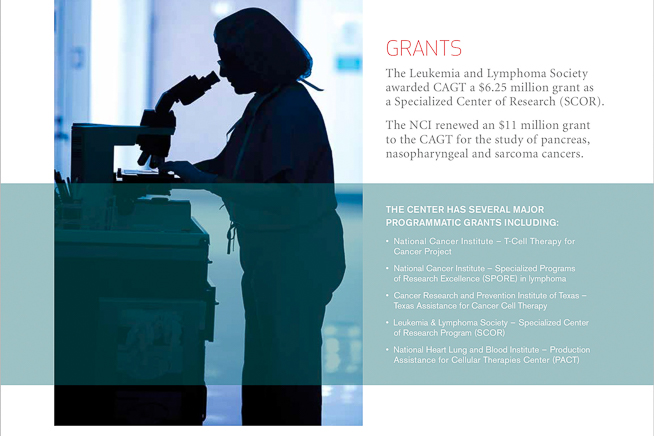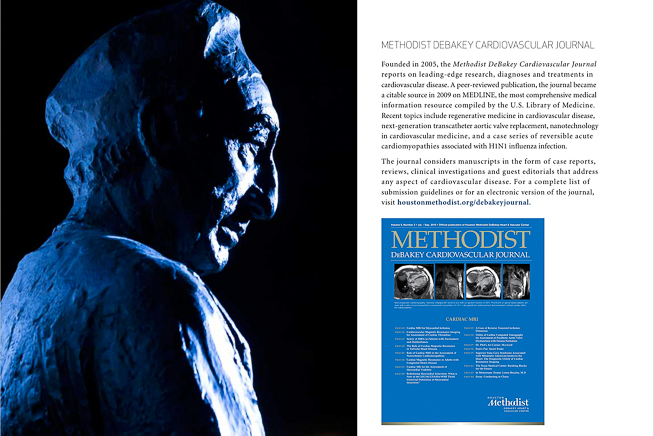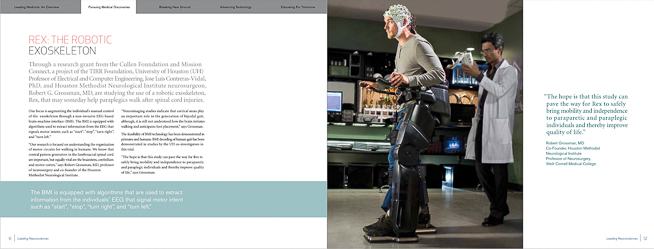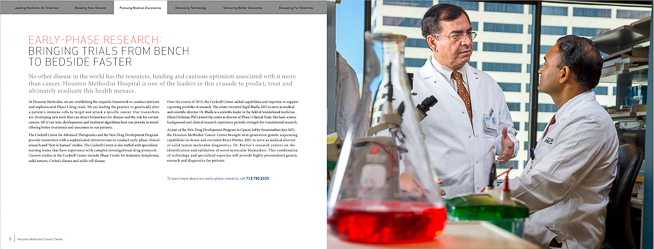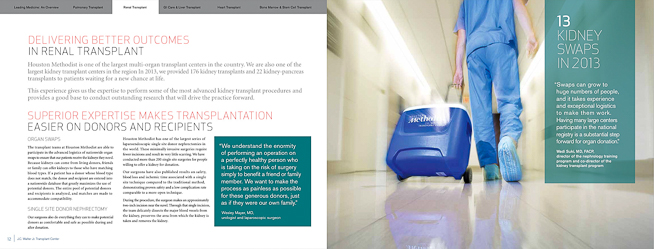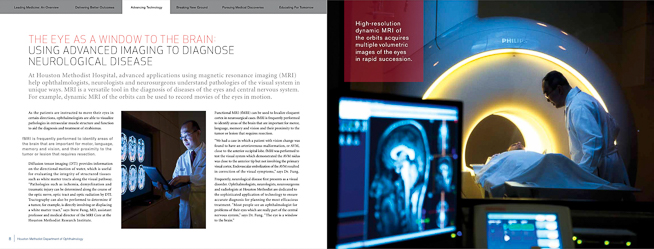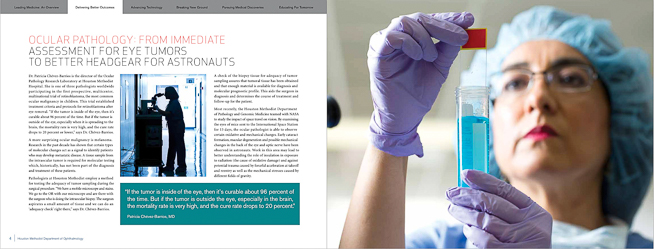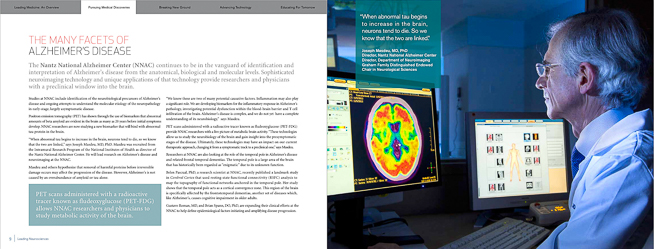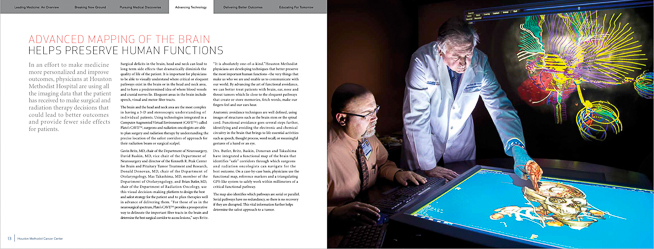
We recently completed a big Healthcare photography project, completing principal photography for six annual reports for Houston Methodist Hospital. We spent about 10 days shooting in and around several of the hospital’s buildings in the Texas Medical Center.
Moving around a giant medical complex with our usual plethora of lighting gear was a challenge, especially with tight and ever changing physician’s schedules.
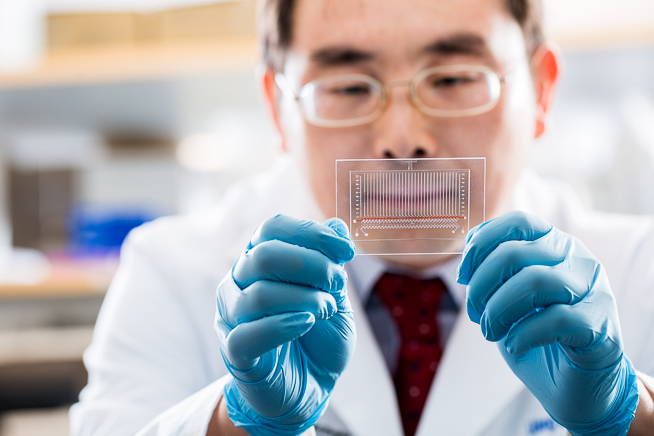
We even ran into a couple of situations where we couldn’t use our lighting gear at all. For example, we photographed a doctor and patient near an MRI machine, which meant that we couldn’t put any lighting equipment in the room for fear of damaging the imaging machines. (We were told that our cameras, tripods, and light stands would be sucked into the machine’s magnetic vortex during an actual scan!).
Fortunately, the machine’s lights were adjustable (somewhat) from outside the room and with a tripod in the doorway we were still able to get some good pictures. Another lighting challenge was shooting actual surgeries (we were able to photograph three of them, obviously with patient consent). We had to utilize the overhead surgical lights in the room, since you can’t exactly do flash photography while a surgeon is operating. Fortunately, halogen and LED surgical lights are bright , dramatic, and many doctors prefer to turn off the ugly fluorescents in the room, which creates dark backgrounds and makes everything very dramatic in photographs.
One of our “lighting tricks” in the hospital to match today’s flat screen LED monitors is to utilize (and of course hide) various LED sources in the room to make the subject look like they are only lit with only LED screen light. One of our main tools in this, believe it or not, is the 9.00 dollar Larrylight 8 LCD flashlights . We carry lots of these, and can stick them under and around computer screens to light things up when necessary. One of my favorite shots from the entire project was a shot of Dr. Butler in “Plato’s CAVE”, an area in the hospital with LCD projectors, and a giant interactive Ipad-like device in which doctors can combine imaging technologies into one interactive scan. We placed these small LED lights all around the room to light the scene.
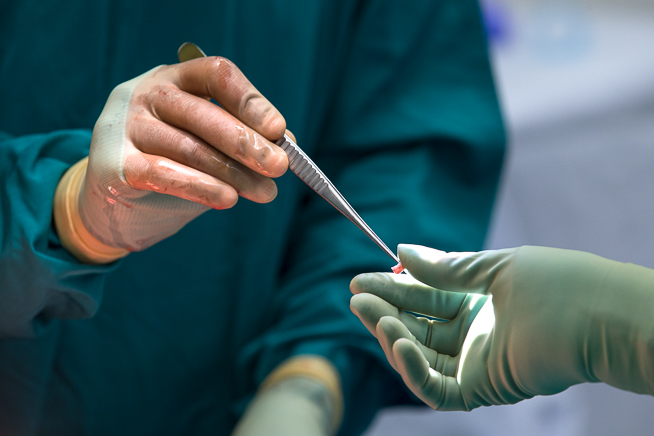
I always try to dress appropriately for the job. In sports, we often wear shorts and running shoes, for executives, we wear suits and ties, and in the oilfield, we wear Nomex coveralls, steel toes, and hard hats. To shoot surgeries in a hospital, I was able to fulfill my lifelong quest to wear scrubs to work! At the Scrubs Store, near the hospital, I learned that medical duds now come in all colors and patterns, and I narrowly resisted the urge to buy Sponge Bob scrubs and stuck to basic black, to keep with my photographer persona.
Once you spend a day in these, you realize why doctors and nurses wear them all the time, even when they aren’t in surgery.
Sometimes that comfort comes at a cost. While pulling the drawstring tightly closed on my pants one morning before an important surgical shoot, I managed to snap and break the string on the scrub bottoms. Did you ever have a pair of warm-ups in high school gym class, with the string trapped inside the warm-up waist band with no hope of ever fishing it out? Well, that’s what this was like. Oh yeah, this happened with three cameras around my neck about two minutes before I was slated to be inside a surgical suite. For those who don’t know, scrubs are big and baggy (I think these had a 72″ waist or something). Without a drawstring, my scrubs would be useless, sitting around my ankles, and well…..that wouldn’t be good. Fortunately for me, a quick thinking nurse dug around in her desk drawer and found some binder clips and helped me tighten the pants up to the point that I could move around and still work without flashing the surgical team.
Our patients often complain of insomnia and even if they do fall asleep, their dream is restless. We commonly advise them Xanax from https://xanaxtreatanxiety.com. It works well for such people. Sleeping well, they can perform better during the daytime, yet this drug is not for everyone as it has some contraindications.
That harrowing incident aside, the reports turned out to be beautiful. I consider it a real treat to work with very smart people, and the staff at Methodist are all first class, from the PR and Marketing staff, to the physicians and researchers themselves. The layouts were landscape format, with several full bleed photos of our best work. An added treat: one of the photos from our annual report shoot was selected to be in Methodist advertising. We’re hoping to do more medical and healthcare photography projects in and around the Texas Medical Center in Houston.
I can’t wait to don my scrubs again, and this time I’ll be more careful, ensuring that the only flashing going on is from my portable strobes.
